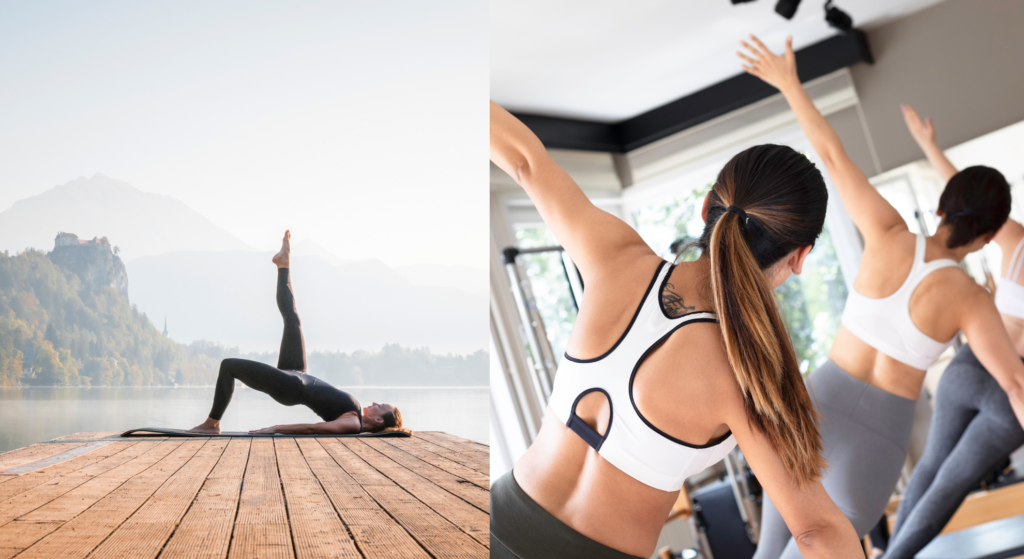In the world of fitness, Yoga and Pilates are two popular mind-body practices that offer numerous physical and mental benefits. While they share some similarities, they are distinct in their approaches and goals. In this article, we’ll explore the main differences between Yoga and Pilates, helping you make an informed choice about which practice aligns best with your fitness and wellness goals.
Origin and Philosophy:
- Yoga: Yoga is an ancient practice that originated in India and has deep spiritual roots. It emphasizes the connection between mind, body, and spirit, with a strong focus on meditation, breathing techniques, and achieving inner balance.
- Pilates: Pilates, on the other hand, was developed by Joseph Pilates in the early 20th century. It was initially designed as a rehabilitation program for injured soldiers. While it incorporates a mind-body connection, its primary focus is on building physical strength, flexibility, and stability.
Primary Goals:
- Yoga: The main goal of yoga is to achieve a state of mindfulness and spiritual enlightenment while enhancing flexibility, balance, and strength. It’s often used as a means of stress relief and relaxation.
- Pilates: Pilates primarily aims to improve physical fitness by strengthening the core, improving posture, and enhancing muscular endurance. It’s often recommended for those seeking a toned body and improved physical performance.
Breathing Techniques:
- Yoga: Yoga places a strong emphasis on controlled, deep, and rhythmic breathing techniques. Pranayama, the practice of breath control, is integral to most yoga styles and helps foster a sense of tranquility.
- Pilates: While Pilates does incorporate breathing techniques, they are not as prominent as in yoga. Pilates breathing is often more structured and focuses on improving oxygen circulation and enhancing movement efficiency.
Exercise Repertoire:
- Yoga: Yoga primarily involves a series of poses or asanas that stretch and strengthen various muscle groups. It also includes dynamic sequences, such as Vinyasa and Ashtanga, to increase heart rate and flexibility.
- Pilates: Pilates focuses on a set of specific exercises performed on machines or mats, which target the core, back, and other muscle groups. These exercises often involve precise movements and controlled resistance.
Equipment:
- Yoga: Yoga is primarily equipment-free, with practitioners using only a yoga mat and occasionally props like blocks and straps.
- Pilates: Pilates can be done on a mat, but it often utilizes specialized equipment such as the reformer, cadillac, and chair, which provides resistance and support.
Intensity:
- Yoga: While some yoga styles (e.g., Power Yoga) can be physically demanding, yoga is generally considered a lower-intensity practice, with a greater emphasis on relaxation and mental well-being.
- Pilates: Pilates is known for its focus on physical strength and conditioning, making it a higher-intensity workout that can lead to muscle toning and improved posture.
Conclusion:
Both Yoga and Pilates offer a plethora of benefits, and the choice between the two depends on your personal preferences and fitness goals. Yoga is ideal for those seeking a holistic approach to well-being, spiritual enlightenment, and relaxation. In contrast, Pilates is perfect for individuals looking to build strength, improve posture, and enhance physical fitness.
If you’re looking to experience the benefits of both yoga and Pilates, Get Grounded has you covered! At Get Grounded, we offer a variety of classes, including traditional Yoga and Pilates mat classes. Moreover, we have a unique offering called “Yogalates,” which combines the best of both worlds, providing you with a balanced fusion of yoga and Pilates techniques to enhance your overall well-being.

